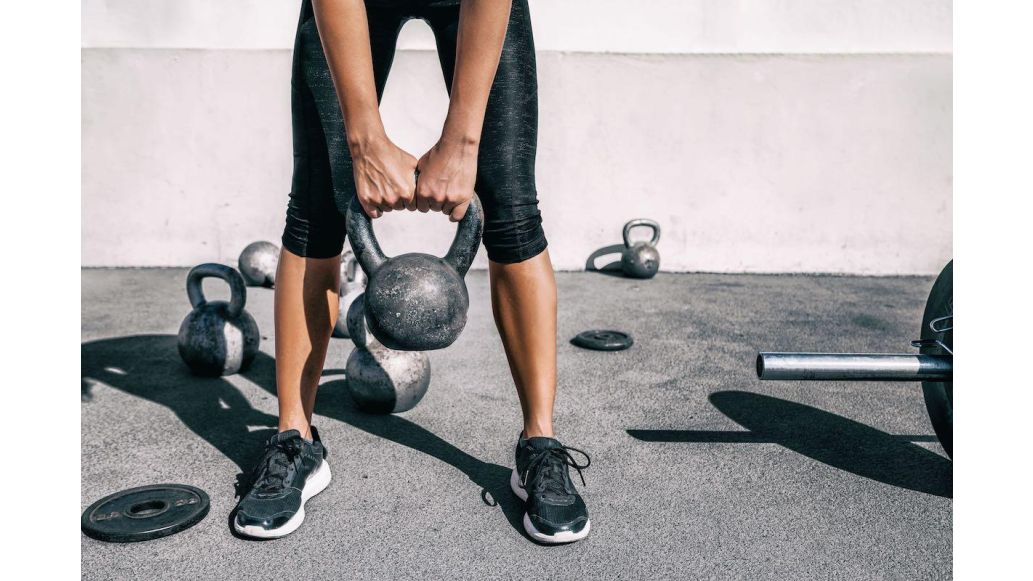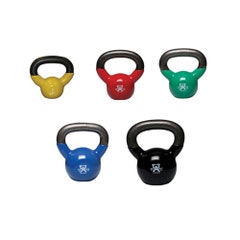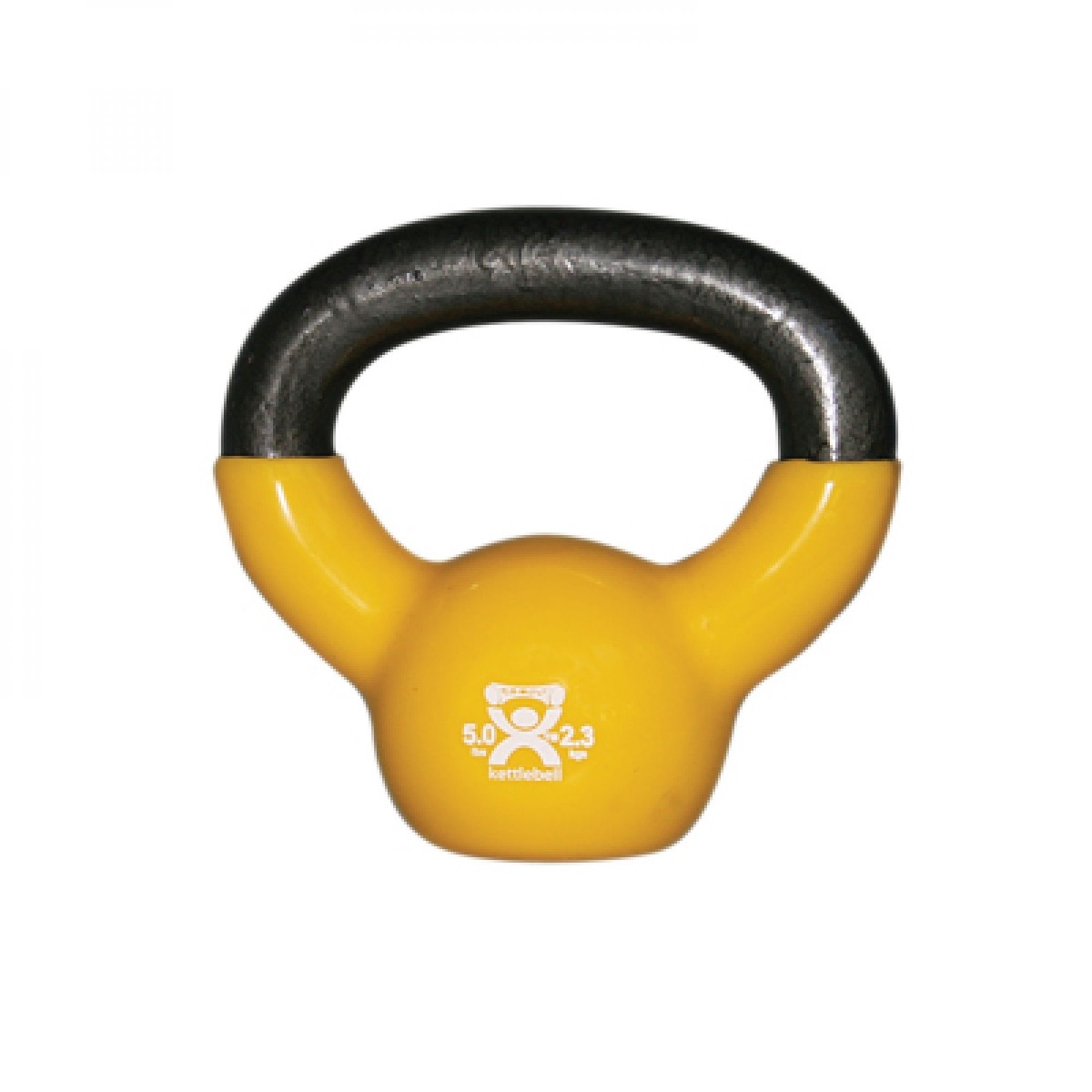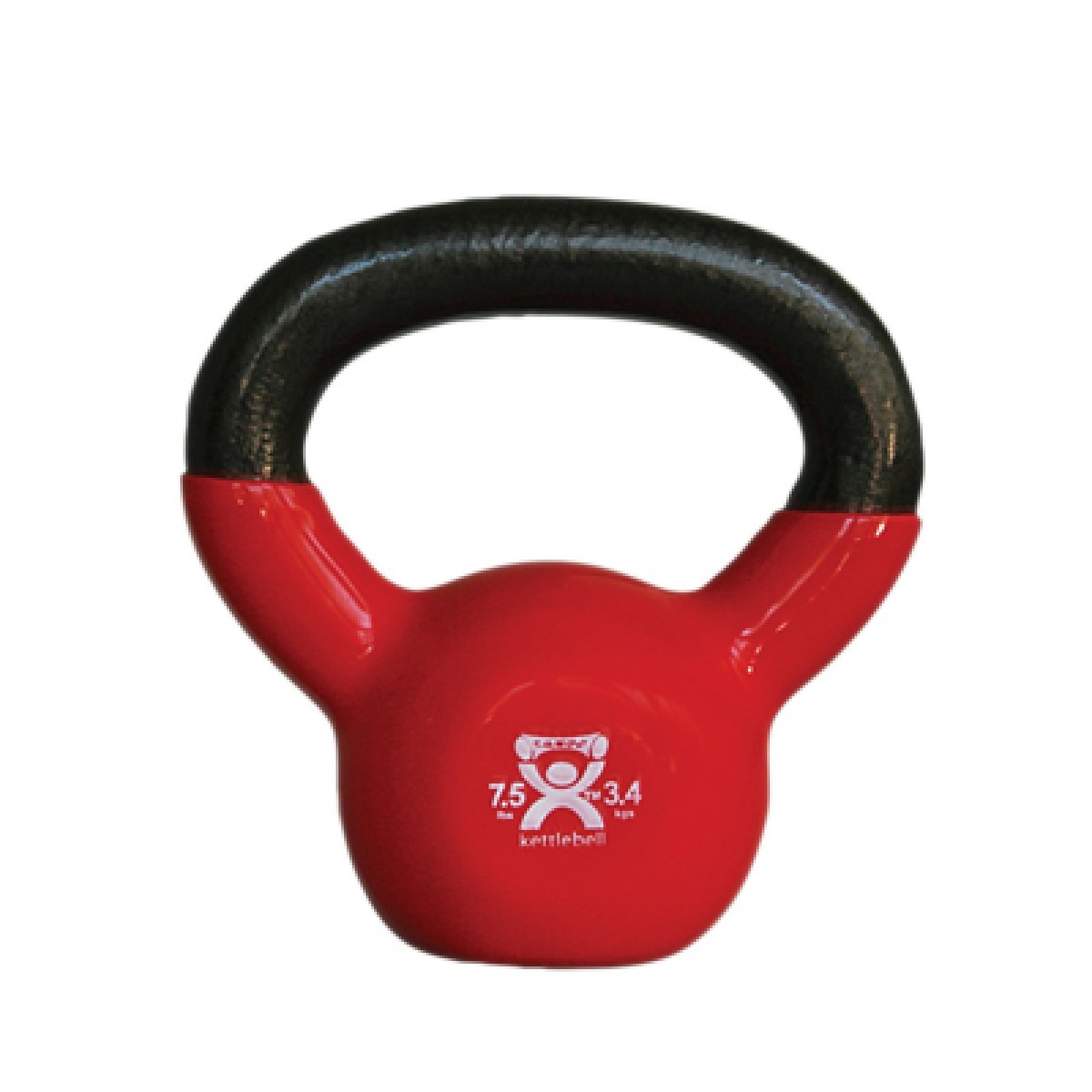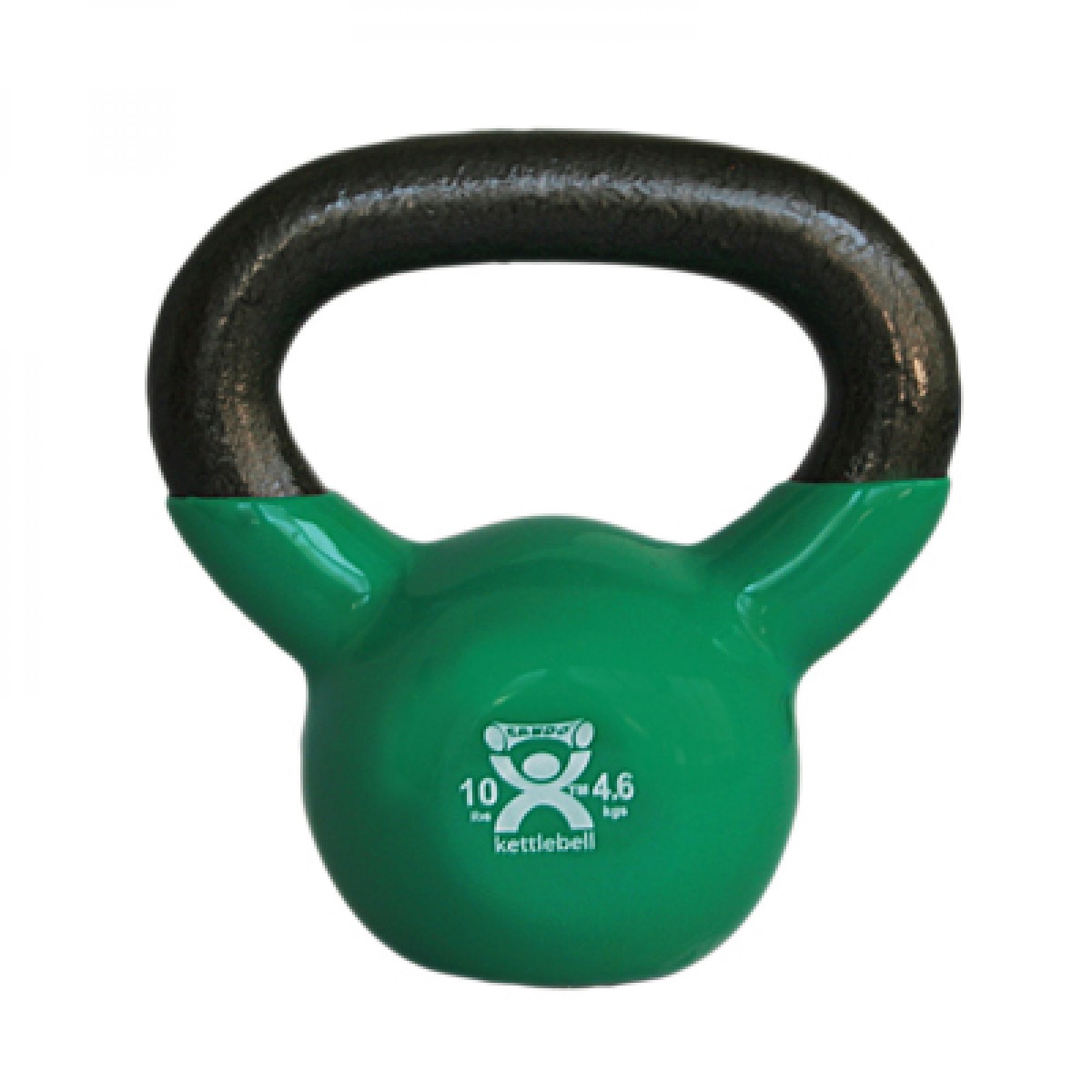Key Takeaways
- Kettlebell benefits include increasing range of motion, improving core strength, promoting good posture, and developing explosive power through dynamic movements
- With a variety of sizes to choose from, select the weight that is right for you based on weightlifting experience
- Switch up your at-home workout routine with these 7 kettlebell exercises that work the whole body
Top Products in This Article
We’ve provided step-by-step instructions for a variety of workouts that use gym equipment such as dumbbells and resistance bands. But let’s switch things up with a kettlebell!
A kettlebell possesses a thicker handle, requiring a firm grip and ultimately increasing forearm strength. Similar to dumbbells and resistance bands, kettlebells are portable and allow you to train anywhere.
Spice up your next workout and add some dynamic movements with a few kettlebell exercises!
Benefits of Using a Kettlebell
This cast-iron weight with an oversized handle is a great way to add variety to workouts and challenge your center of gravity. Best for complex movements, here are a few other benefits to consider when purchasing equipment for your home gym!

- Increases Range of Motion: Often kettlebell exercises require you to move through multiple planes of motion while controlling the force, torque, and range of motion. Over time, these exercises will strengthen major muscle groups and improve flexibility. These improvements can help decrease the chance of injury in your joints, ligaments, and muscles.
- Develops Explosive Power: One of the most effective kettlebell exercises during training is the kettlebell swing. The kettlebell swing helps train the hips to produce force in both strength and speed. Improved hip strength ensures stability and helps prevent injuries as well as assists athletic movements, such as jumping and sprinting.
- Improves Core Strength & Stability: Using a kettlebell during explosive movements will also stimulate the abdominal muscles to build core strength. These same movements require core contraction and coordinated breathing. In addition, kettlebell exercises allow multiplanar training which works your core from all directions. By improving core stability, you can quickly move in multiple directions without risking injury (i.e., twisting, turning, and accelerating/decelerating).
- Promotes Good Posture: Lastly, kettlebell exercises focus heavily on the posterior chain, otherwise known as the muscles from the heels to the back of the head. In addition to strengthening muscles that have become weak, kettlebell training promotes good posture. By regularly performing these exercises, you will rapidly develop the major muscles of your hips, core, shoulders, and neck.
Which Weight Do I Start With?
Kettlebell training is very different from standard isolation training. You’ll be using multiple muscle groups at the same time through ballistic, full-body movements. If you are new to weight training, it's best to start at a beginner level so you can learn proper mechanics. If you are experienced in traditional weightlifting, you might be able to start at a heavier weight than those who are new to both weightlifting and kettlebell training.
Check out some of the different kettlebell sizes we offer below!
7 Kettlebell Exercises for All Levels
The ability to swing kettlebells provides training for muscle groups across planes such as vertical (sagittal) and horizontal (transverse). Kettlebells also help improve functional strength, which is defined as strength that is applicable in everyday life, such as carrying heavy grocery bags or lifting heavy boxes. Here are 7 kettlebell exercises to help improve your strength and conditioning! For a greater challenge during your workout, use heavier loads and fewer reps.
Pulsing Squat

- Feet hip width apart, grip the kettlebell with both hands around the handle
- Holding the kettle bell between your feet, lower into a deep squat. Pulse 3 times
- Drive through your glutes to return to a standing position. Make sure to keep your chest up and your back straight. Do this exercise 10 times
Deadlift

- Stand shoulder-width apart with knees slightly bent. Grip the kettlebell with bold hands between the feet
- Take a deep breath and engage your core, then send your hips back to find your hinge position
- To rise back to standing, drive your hips forward to full extension
- Imagine drawing a zipper closed with your glutes on the way up. Do this deadlift 10 times
Kettlebell Swing

- Stand with your feet hip-width apart, holding the kettlebell with both hands between your feet
- Shift your body weight into your heels, and lower your butt back and down toward the wall behind you
- Driving through your heels, explode through your hips to send the weight swinging upward from your quads. Aim for chest height, with your arms extended
- As the kettlebell begins to descend, let the weight do the work as you ready your body for the next swing
- As the kettlebell makes the transition from backward to forward, drive through your heels and hips to repeat 12 times
Lunge Press

- Start standing with your feet shoulder-width apart. Hold the kettlebell in front of your chest with one hand
- Lunge forward with the right leg while holding the kettlebell in your left hand
- Extend your left arm with the kettlebell overhead
- Return to standing while returning the kettlebell to your chest
- Do this exercise 10 times. Repeat on the opposite side
Triceps Extension

- Stand with your feet shoulder-width apart and hold the kettlebell in both hands
- Lift the kettlebell straight above your head with your elbows tucked in by your ears
- Slowly lower the kettlebell behind your head, bending at your elbows. Return to starting position
- Do this extension 10 times
Around the World
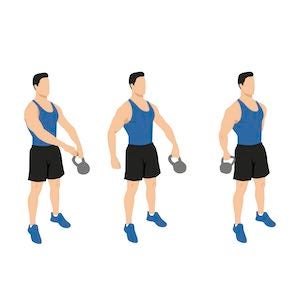
- Stand with your feet about shoulder-width apart
- Hold the kettlebell with both hands in an overhand grip in front of your pelvis
- Keeping your core strong, rotate the kettlebell around your body. Make sure to change hands in the front and in the back
- Do this exercise 12 times
Windmill
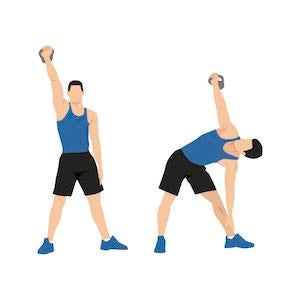
- Feet hip-width apart, grip the kettlebell with your right hand and extend the right arm over your head
- Extend the left arm down in front of your left thigh. In this position, your arms might look like two arms of a windmill
- Hinging at the hips, lower the left hand down the left side. Keep the right arm steady and fully extended overhead
- In the lowest position (with the left hand close to the left foot) your torso will be tipped to the left but slightly rotated to the right. When done properly, you'll feel some weight shift into your right hip
- Reverse the movement. Do this exercise 10 times before switching the kettle bell to the left hand
Including kettlebells in your exercise routine for a greater variety of dynamic movements can be beneficial, but they are not superior to dumbbells or any other strength training equipment. Choose exercises and equipment that are convenient, safe for you, and that will best help you reach your goals. For more workouts, check out these other articles!
References:
1. Anonymous. (2019). 18 Incredible Benefits of Kettlebells. Set for Set. Retrieved from https://bit.ly/3llIx4d
2. Cooper, Edward. (2021). 11 of the Best Kettlebell Exercises to Build MuscleMen’s Health. Retrieved from https://bit.ly/3rRiQex
Medical Disclaimer: The information provided on this site, including text, graphics, images and other material, are for informational purposes only and are not intended to substitute for professional medical advice, diagnosis or treatment. Always seek the advice of your physician or other healthcare professional with any questions or concerns you may have regarding your condition.








 France
France Australia
Australia